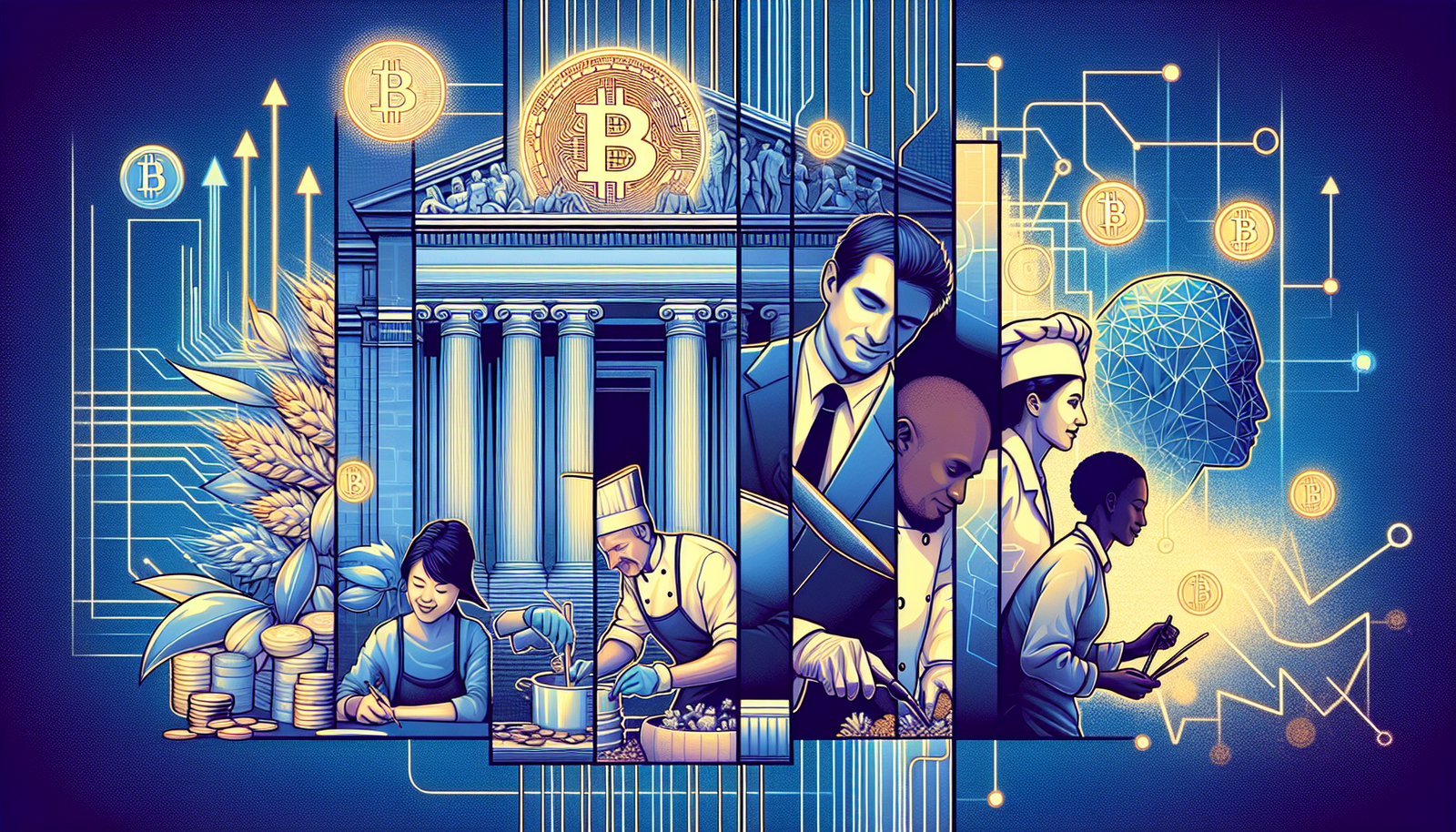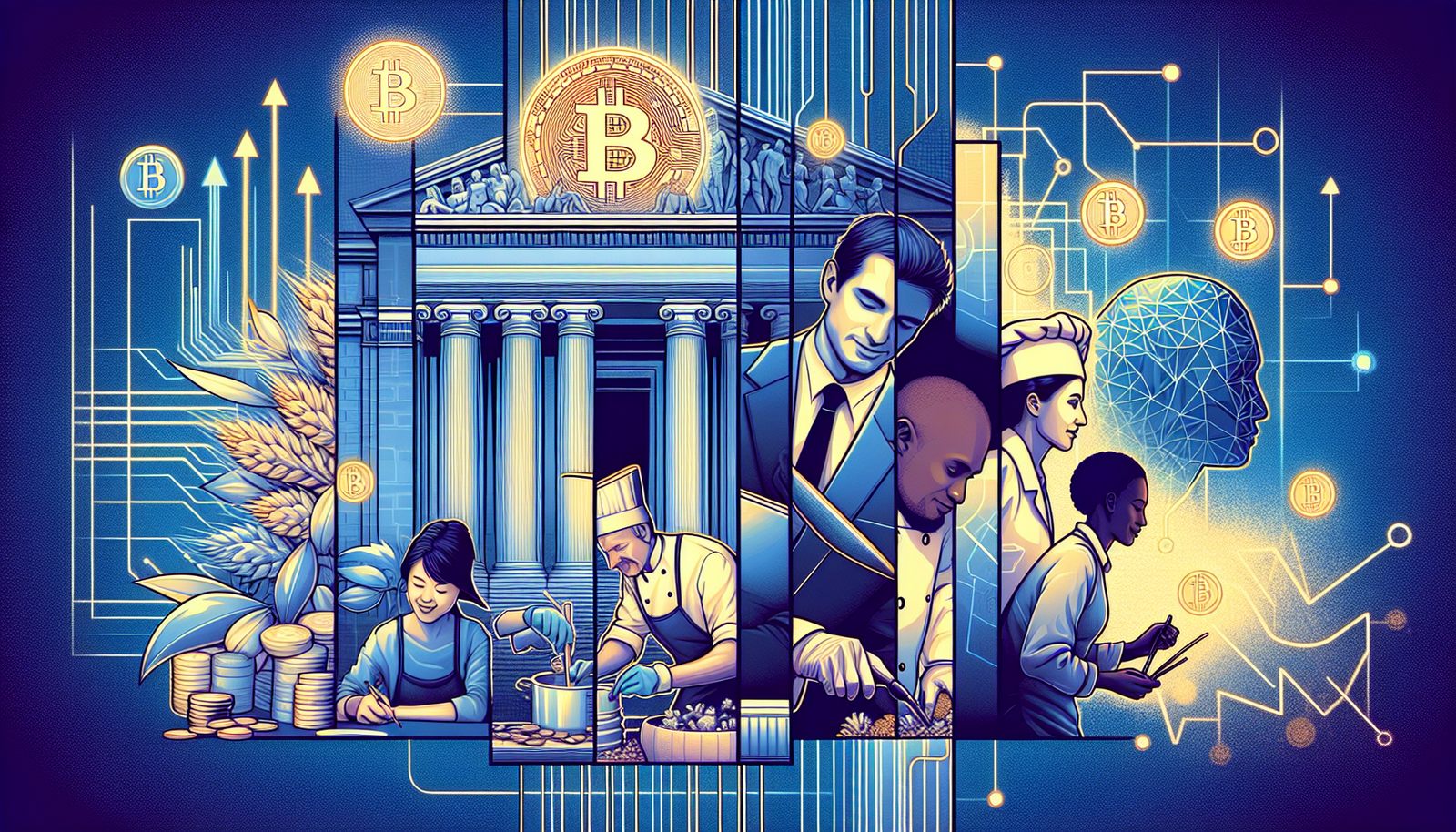
You are about to embark on a fascinating journey, a quest to uncover the intriguing mystery that has bewitched many – the genesis of money. “Where Does Money Come From” traces the intricate web of financial systems, the innovations in currency, and the pivotal role of banks in monetary creation. You will step into the world of economics where numbers dance, concepts intertwine, and the answer to the all-important question unwinds. So, brace yourself for an enlightening exploration that succinctly answers one of the most ubiquitous queries about our society: Where does money come from?
Origins and Definition of Money
Let’s take a little trip back in time. Picture this, you’re a humble farmer trading grains for a pair of shoes. Sounds simple right? This is what the earliest economies looked like, where goods were exchanged for other goods, termed as a barter system. This, my dear friend, was the inception of money in its most primitive form.
Barter systems and early forms of money
The barter system, in spite of its simplicity, had its shortcomings. What if you wanted shoes, but the cobbler didn’t need grains? The inconvenience of the barter system escalated the need for a common medium of exchange – money. Early forms of money varied wildly across different cultures, but what unified them all was their intrinsic value. Cowry shells, gold coins, even large stones, served as money due to their cultural, religious, and aesthetic significance.
The concept and functions of money
So, what is money really? You can define money as an agreed-upon medium for exchange, a unit of accounting, and a store of value. Money allows you to quantify the value of goods and services and facilitates trade without the need for a barter. Additionally, money’s ability to hold value over time allows it to serve as a store of wealth.
Commodity money to fiat money
The evolution of money saw a shift from primitive commodity money to modern fiat money. Commodity money like gold and silver coins had intrinsic value, i.e., the value of the material itself. Contrastingly, fiat money like the dollar bills in your pocket, carries value by the decree of a government. Fiat money material is intrinsically worthless; it is the government’s assurance that gives it value.
The Role of Central Banks
Now, let’s get introduced to the alchemists of our financial world: Central Banks. They are the conductors steering the economic symphony, ensuring it doesn’t veer towards chaos.
Creation of a Central Bank
Central banks came into existence to bring uniformity and stability to the financial system. Central Banks, like the Federal Reserve in the US or The Bank of England, are often government-owned or controlled, and are essentially the bankers’ bank.
Responsibilities and functions of the Central Bank
As a Central Bank, you have a few major responsibilities on your shoulders. You manage the nation’s money by controlling interest rates and inflation. You regulate the commercial banks to ensure a healthy banking system. Also, you bear the responsibility of maintaining economic stability and growth.
How Central Banks ‘make’ money
But how do Central Banks ‘make’ money? It’s not just about firing up the printing presses. Central banks expand money supply through open-market operations, by purchasing government securities from banks while crediting their accounts, thus increasing the bank’s reserves and the total money supply.

The Money Creation Process
Let’s delve into the mystical process of money creation.
Fiat money creation
Money, particularly fiat money, is created by a stroke of a pen, or in today’s age, a keystroke on a computer. Central Banks create it out of thin air. Sounds like magic, doesn’t it?
Fractional reserve banking system
Under the fractional reserve system, commercial banks are bound to maintain only a fraction of their deposits as reserves. The remaining funds are loaned out, turning your deposited money into someone else’s money, thereby creating new money.
Money multipliers
And thus, money multipliers come into the picture. The ability of banks to loan out deposits and generate multiple rounds of lending, theoretically expanding the money on the promise of paid-back loans, creates a proverbial ‘money multiply’ effect.
Monetary Policy
Let’s get serious for a moment and talk about the Central Bank’s key weapon to manage the economy- Monetary Policy.
Definition and purpose of Monetary Policy
Monetary policy is the Central Bank’s action plan to manipulate the money supply and interest rates, to achieve economic health. It can either restrict or boost the economy based on its needs.
Instruments of Monetary Policy
The common tools at your disposal as a Central Bank are open market operations, reserve requirements, and the discount rate. You modify these tools in order to manage liquidity, control inflation, and stimulate economic growth.
Impact of Monetary policy on money supply
By adjusting these instruments, the Central Bank directly impacts the money supply. An expansionary policy increases the money supply to stimulate economic activity, while a contractionary policy reduces money supply to decrease inflation.

Printing of Money
Speaking of increasing money supply, let’s touch on one method that often makes headlines – literal money printing.
Logic behind money printing
The creation of money via printing presses increases the flow of cash in an economy. It’s a technique often employed to manage inflation, or during financial crises when more cash is needed.
Process of money printing
When the Central Bank decides to print more money, it doesn’t just start the press and create a forest of bills. New currency is printed, and the Central Bank uses it to buy government bonds, effectively injecting money into the system.
Implications of excessive money printing
But beware, if you start the printing presses and forget to turn them off, you’ll end up with hyperinflation. Too much money chasing fewer goods can cause prices to spiral, devaluing the currency and disrupting the economic balance.
Digital Money and Cryptocurrencies
Imagine you could create money from code. You could mine it. Sounds like a plot from a sci-fi movie, right? Welcome to the era of Digital Money and Cryptocurrencies.
Evolution of digital money
In the evolution of money, digital currency is the next leap. Digital money, simply put, is electronic versions of traditional physical currencies. But digital currencies like cryptocurrencies go further, leveraging blockchain technology to operate independently of a Central Bank.
How cryptocurrencies are ‘mined’
Cryptocurrencies are mined, not printed. Mining is the process of validating cryptocurrency transactions on the blockchain. Miners are rewarded with new cryptocurrency, thus creating new money.
Impacts of digital money on the economy
Digital money brings along a paradigm shift. It allows 24/7 access, lowers transaction costs, and speeds up international transactions. However, the volatility and regulatory challenges of cryptocurrencies like Bitcoin, raise eyebrows on their potential impact on financial stability.
Influence of Economics on Money Supply
Money doesn’t exist in a vacuum; it is directly linked to the fluctuations of the economy.
Basic economic principles
Basic economic principles, particularly supply and demand, significantly influence money. Abundance or scarcity of money impacts its purchasing power, leading to inflation or deflation.
Supply and demand
Just like goods, money is also subject to the laws of supply and demand. More money in circulation can trigger price increases (inflation) as there’s more money available for the same amount of goods. Conversely, a smaller money supply can lead to price decreases (deflation).
Inflation and deflation
Inflation is when too much money chases too few goods, and deflation is just the opposite. Central Banks endeavor to strike a balance between the two to avoid economic instability.
Legal Tender
Legal tender is money recognized by the government as suitable for settling debts.
Definition of legal tender
Simply put, legal tender is the money that you are legally obliged to accept if offered in repayment of debt. Your country’s currency notes and coins are typically considered legal tender.
Creating legal tender
Legal tender is created by an act of the legislature or a government decree. The government imbues these bits of paper or pieces of metal with value, by deeming them acceptable for all debts.
Implications of legal tender laws
Legal tender laws obligate acceptance of the designated currency, thereby promoting its use. However, these laws have implications as they can enforce the use of potentially unstable fiat money over more stable forms of currency.
Banks and Money
Commercial banks, like Central singles in a chorus, play an important supporting role in the grand opera of money creation.
Role of commercial banks in money creation
Commercial banks hold the power to create money through the loan issuance process. When you borrow money from a bank, it doesn’t come out of another customer’s deposit. Instead, the bank ‘creates’ it by lending against its reserve.
Loan issuance and money creation
When banks give out loans, they create deposits for the borrowers, thereby expanding the money supply. Simply put, every new loan is new money in the economy.
Regulation and control of banks
However, banks don’t have unlimited power to create money. They are regulated by the Central Bank, which sets the reserves they must hold, and monitors them closely to ensure the stability of the economic system.
Future of Money
Here’s a thought for you: what does the crystal ball hold for the journey of money?
Predictions and possibilities
Imaginations run wild when predicting the future of money. From completely digital currencies to biometric payments, the possibilities seem both enticing and overwhelming.
Effects of digitalization
The advent of digitalization is transforming the financial landscapes globally. The shift to paperless transactions, internet banking, digital wallets, etc., are changing how we interact with and perceive money.
Potential impact of cryptocurrencies
Cryptocurrencies could redefine the concept of money itself, given their decentralized nature. However, they have to overcome major hurdles like volatility, regulatory challenges, and widespread acceptance to seal their place in the future of money.
So, where does money come from? It is derived from a societal agreement, initiated by the state, facilitated by banks, influenced by the economy, and constantly evolving with technology. The story of money, in essence, is the story of civilization itself, a mirror of our collective journey through time.

Leave a Reply